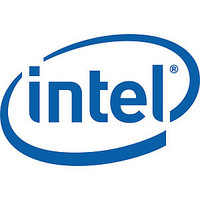lxt9785 Intel Corporation, lxt9785 Datasheet - Page 34

lxt9785
Manufacturer Part Number
lxt9785
Description
Advanced 8-port 10/100 Mbps Phy Transceivers
Manufacturer
Intel Corporation
Datasheet
1.LXT9785.pdf
(226 pages)
Available stocks
Company
Part Number
Manufacturer
Quantity
Price
Part Number:
lxt9785EHC DO
Manufacturer:
INTEL
Quantity:
20 000
Part Number:
lxt9785HC
Manufacturer:
LEVELONE
Quantity:
20 000
Part Number:
lxt9785HC C2
Manufacturer:
INTEL
Quantity:
20 000
Company:
Part Number:
lxt9785HCB2
Manufacturer:
Intel
Quantity:
184
LXT9785 and LXT9785E Advanced 8-Port 10/100 Mbps PHY Transceivers
3.2
3.2.1
3.2.2
36
Table 5.
PQFP Signal Descriptions
Signal Name Conventions
Signal names may contain either a port designation or a serial designation, or a combination of the
two designations. Signal naming conventions are as follows:
PQFP Signal Descriptions – RMII, SMII, and SS-SMII Configurations
Table 5
page 50
Intel
•
•
•
1. Type Column Coding: I = Input, O = Output, OD = Open Drain output, ST = Schmitt Triggered input, TS =
2. The IP/ID resistors are disabled during H/W Power-Down mode. If a Pin is an output or an I/O, the IP/ID
3. RxData[0:7]_0, RxData[0:7]_1, CRS_DV[0:7] and RxER[0:7] outputs are three-stated in Isolation and H/W
PQFP
44
61
62
52
53
42
43
Designation
Three-State-able output, SL = Slew-rate Limited output, IP = weak Internal Pull-up, ID = weak Internal pull-
Down.
resistors are also disabled when the output is enabled.
Power-Down modes and during H/W reset.
6
Port Number Only. Individual signals that apply to a particular port are designated by the
Signal Mnemonic, immediately followed by the Port Designation. For example, Transmit
Enable signals would be identified as TxEN0, TxEN1, and TxEN2.
Serial Number Only. A set of signals which are not tied to any specific port are designated by
the Signal Mnemonic, followed by an underscore and a serial designation. For example, a set
of three Global Configuration signals would be identified as CFG_1, CFG_2, and CFG_3.
Port and Serial Number. In cases where each port is assigned a set of multiple signals, each
signal is designated in the following order: Signal Mnemonic, Port Designation, an
underscore, and the serial designation. For example, a set of three Port Configuration signals
would be identified as RxData0_0 and RxData0_1, RxData1_0 and RxData1_1, and
RxData2_0 and RxData2_1.
®
Pin-Ball
LXT9785/LXT9785E RMII Signal Descriptions – PQFP (Sheet 1 of 3)
through
provide PQFP signal descriptions. Ball designations are included for cross-reference.
PBGA
E12
C3,
E6,
E2,
D4
F4
B5
A4
Table 17, “Intel® LXT9785/LXT9785E Receive FIFO Depth Considerations” on
TxData0_0
TxData0_1
TxData1_0
TxData1_1
TxData2_0
TxData2_1
REFCLK0
REFCLK1
Symbol
Type
I, ID
I, ID
I, ID
I
1
Signal Description
Reference Clock.
50 MHz RMII reference clock is always required. RMII
inputs are sampled on the rising edge of REFCLK,
RMII outputs are sourced on the falling edge.
“Clock/SYNC Requirements” on page 125
CLK requirements.
Transmit Data - Port 0.
Inputs containing 2-bit parallel di-bits to be transmitted
from port 0 are clocked in synchronously to REFCLK.
Transmit Data - Port 1.
Inputs containing 2-bit parallel di-bits to be transmitted
from port 1 are clocked in synchronously to REFCLK
Transmit Data - Port 2.
Inputs containing 2-bit parallel di-bits to be transmitted
from port 2 are clocked in synchronously to REFCLK.
2,3
Revision Date: August 28, 2003
Document Number: 249241
Revision Number: 007
for detailed
Datasheet
See












